Why focus on roofs to control heat and keep cool?
An article by Earth.org raised a few interesting facts (and not so fact) regarding a cool roof. A building can gain heat from a few different sources: the activity inside, the temperature outside, and the radiation that arrives via the infrared, visual and UV rays of the sun. While TVs, ovens, warm bodies, and whether or not it is a hot day may create a need for air conditioning (AC), however the sun’s radiation turns up the temperature more than anything else.
This heat penetrates through any surface that is cooler than the sun’s heat as an external heat source. As heat goes to cool, this creates a heat load and the thermal mass of building materials absorbs and transfers the heat into a building whether it’s a roof or wall, at the envelope of the building.
Cooling down a space can be accomplished in many ways, predominantly including air conditioners yet these are energy demanding mechanical devices create more CO2 emissions, more costs and are limited by supply of power. Energy demands from AC units is projected to keep growing at a fast rate in the coming years as the climate crisis intensifies.
Instead of pumping hot air out, it makes more sense to never let a building heat up in the first place.
earth.org
There’s confusion about Solar Heat
Focusing on roofs to control solar heat gain and keep you cooler is the ability for a roof to reflect and block solar radiation back into the environment and away from the building’s surface is integral in making sure internal temperatures remain more pleasant without AC demands. Solar radiation comprises of infrared, visual and UV heat. Most people are led to believe a ‘cool roof is designed to reflect more sunlight than a conventional roof, absorbing less solar energy’. In part this is true but it’s a standard misguided belief in part as well which is evidence that they don’t truly understand how heat works in total.
The perception of SRI or the Solar Reflectance Index works the same misguided principle. SRI tests are designed by laboratories and are only designed to test very specific points of heat and light and not how all the electromagnetic waves work together. The laboratory tests “assume” theories that are not accurate as with emissivity. The laboratory testing states that standard white paint reflects 70% of the (heat) or light. This isn’t correct. Touch a white car bonnet on a warm day and it will burn your hand. It does not reflect 70% of the heat, only light, not heat.
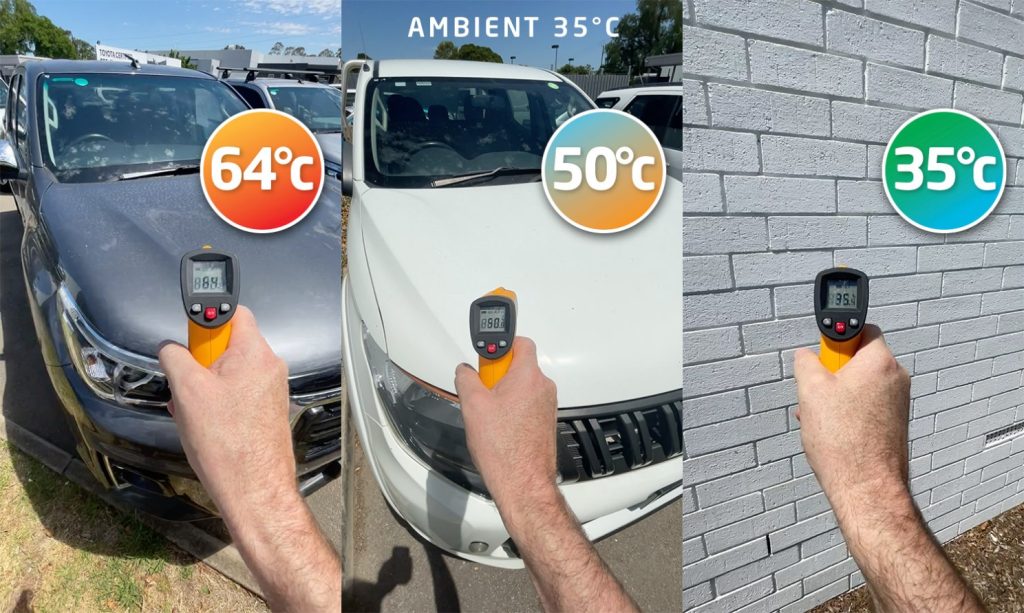
The reflective (light) characteristics are increased from a mixture of colour choice, like white, and material choices or the substrate. So there’s the assumption that the end result is a roof that can reflect up to 80% (an albedo of 0.8) of the solar radiation it is bombarded with. Notice the language of reflection is collapsed with solar radiation which aren’t the same thing. Reflection is light and solar radiation includes light, UV and infrared. The NASA glossary defines albedo as “In radiative transfer studies, single scattering albedo is the ratio of scattering optical depth to the total optical depth (scattering + extinction) of the atmosphere. It is a dimensionless quantity and ranges from 0 to 1.” Scattering optical depth is light; not heat. Infrared heat isn’t light so albedo doesn’t scatter infrared…it absorbs it.
While we often think of albedo in terms of visible light (like the whiteness of snow). The NASA glossary state “The albedo of old snow is about 55% (0.55) and new snow around 80% (0.8). Water surfaces vary from very low, about 5% (0.05) at high sun elevation, to at least 70% (0.70) at low sun angles.” We know that snow does not block IR, it is the thickness of snow that maintains cool on the ground. In fact infrared heat melts snow, so albedo is only a measure of light.
Light Is Not Heat. Light can include heat through infrared but they are not the same.
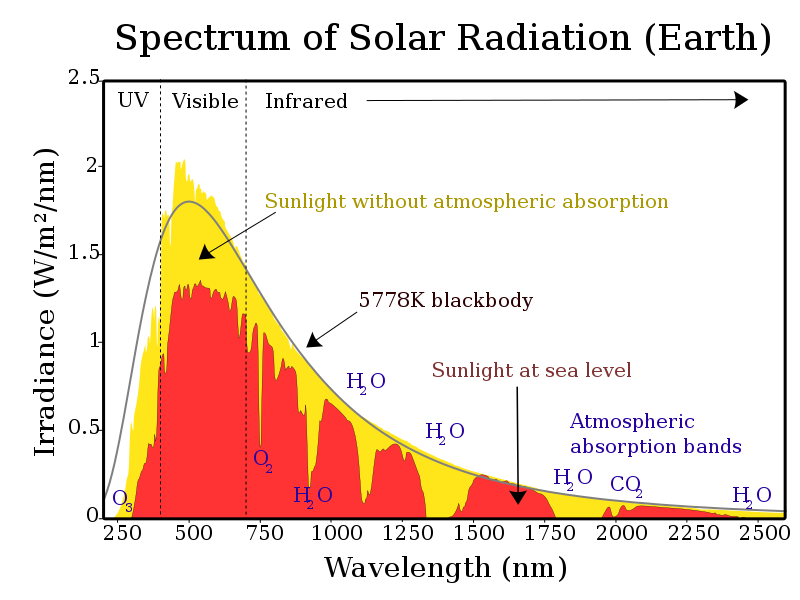
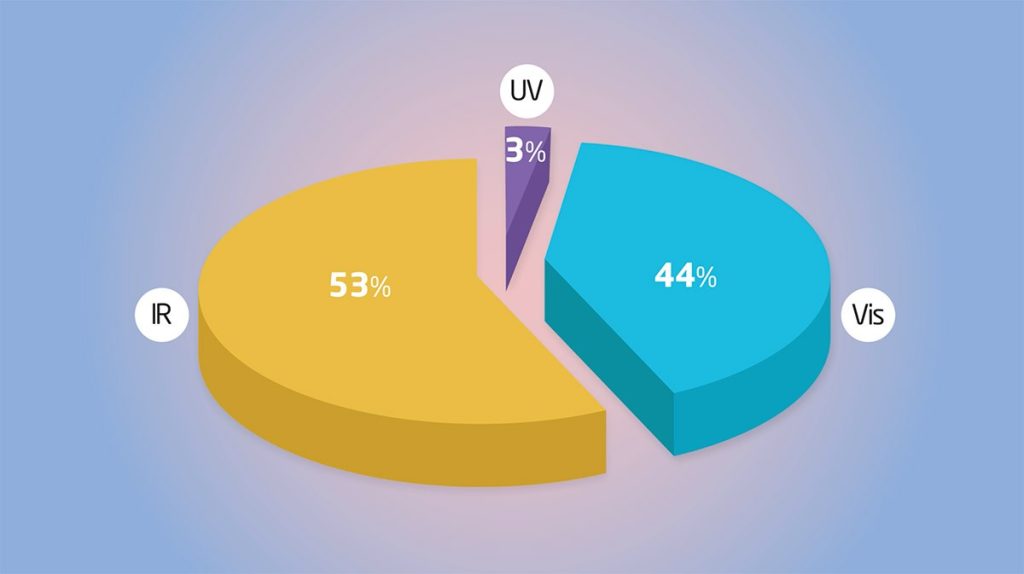
Reflecting Light isn’t Blocking Solar Heat Gain
NatHERS states that 25-35% of heat is absorbed through the ceiling and 15-25% through the walls (see Figure 4). Inside a roof, YourHome states “Reflective insulation mainly resists radiant heat flow because of its high reflectivity and low emissivity (ability to re-radiate heat). Its insulation ability relies on the presence of an air layer of at least 25mm next to the shiny surface. The thermal resistance of reflective insulation varies with the direction of heat flow through it.” This heat is only infrared once converted inside a roof. There is no visual light to reflect. The roof surface converts all the energy to conductive, infrared heat. You cannot see the heat, only feel it.
Placing Super Therm® Ceramics Thermal Insulation Coating on any surface, before the heat loads blocks infrared and reflects the light primarily being a light colour or white is guaranteed to passively manage that thermal transfer and conductivity. In the instance below from YourHome, the traditional insulation will absorb the heat and slowly allow it to transfer until it reaches heat flux.
A little known fact is that traditional insulation was only tested in a lab at 23.8°C with no airflow, moisture or any real world conditions to receive an R value rating in 1979 by Owens Corning. When placed in a ceiling that has all environmental factors, the R value is reduced immediately. Increasing the radiant heat from the roof or wall increases the speed of heat load and heat transfer.
Edoardo Verduci’s article on insulation properties states “as the temperature increase or humidity level increase, the R value of a product decreases, meaning it’s less effective at slowing down the transfer of heat. Real world situations can compromise the R value of traditional insulation substantially (imagine that traditional insulation can lose 35% of its R value when as little as 1.5% humidity is introduced).” (Verduci, 2019).
Bulk insulation has never been field tested in a variety of environments…because it can’t be. The original testing has been lab based in 1977 in the USA (Tye, Desjarlais, Yarbrough, & McElroy, 1980) with bisected specimens and it assumes every environment is 23.8°C (75°F) which is still the same test today. Essentially at 75°F air molecules have minimal vibration or activity. This ASTM C177 Test is used for fibreglass insulation to create the R-value that was developed by Owens Corning (Owens Corning, n.d.).
We know on extreme heat days temperatures reach in excess of 40°C+ and once bulk insulation is loaded with heat it is no longer effective. Inside the roof space of a house can reach up to 80-90°C on a 40°C day with nothing protecting the building’s envelope to keep the solar heat out. Insulation rated for 23°C on a 40°C day will never keep up but it’s also storing heat that’s released at night into the house and the environment contributing to the UHI effect. This is why we need to focus on roofs to control heat to keep cooler.
Cool Roofs Require Less Insulation
Across all climate zones (except 8) in Australia light coloured roofs reduce the need for bulk insulation compared to dark colour roofs according to the Building Code of Australia that outlines the basic R value requirements for roofs, walls and floors. But it’s crucial to understand that roof colours will affect the required R value for a home (source). A light coloured roof requires R 4.1 and dark roof requires R 5.1. This is evidence that colours makes a difference to heat load and therefore you need more traditional insulation. Block heat at the roof will reduce the initial heat load, blocking infrared heat goes the extra mile to make a significant difference to reduce heat in the roof space that goes through the ceiling!
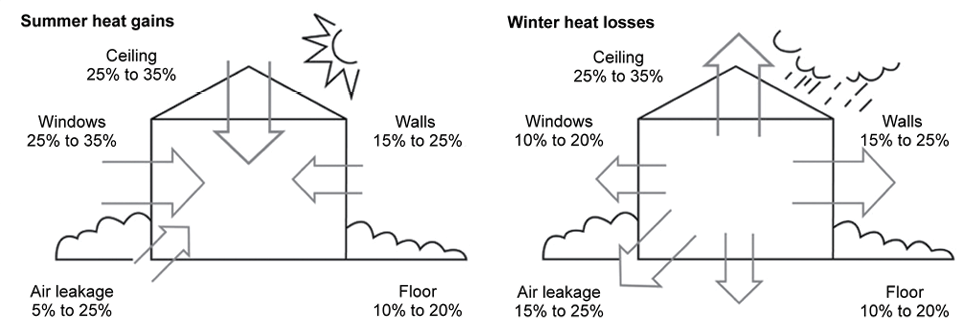
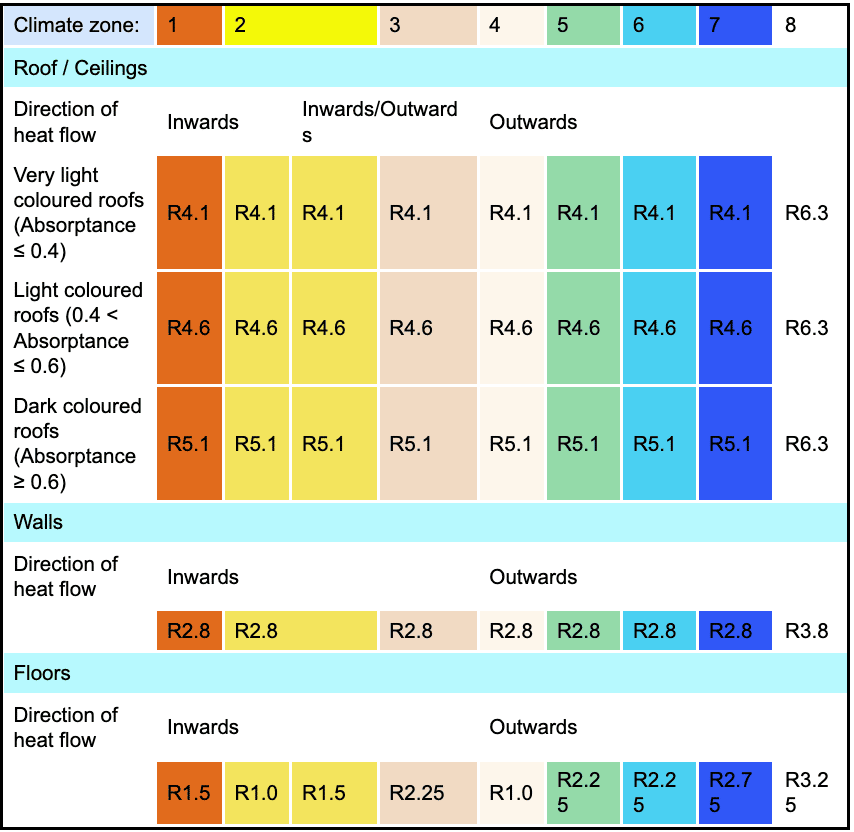
Cool Roof Coatings are the Future
Cool roofs and wall coatings aim to passively future proof buildings, reduce energy consumption, improve sustainability, reduce CO2 emissions, extend roof lifespan, improve well being for humans and animals and reduce the contribution to the urban heat island effect. Ultimately they should measurably reduce heat load inside buildings. As the dramatically changing climate threatens humanity, countries globally are increasingly suffering from sustained heatwaves and are trying to find ways to affordable implement passive cooling strategies in buildings and cool roofs are the blindspot in Australia’s sustainability conversation which can transform your bottomline, well being and competitive edge.
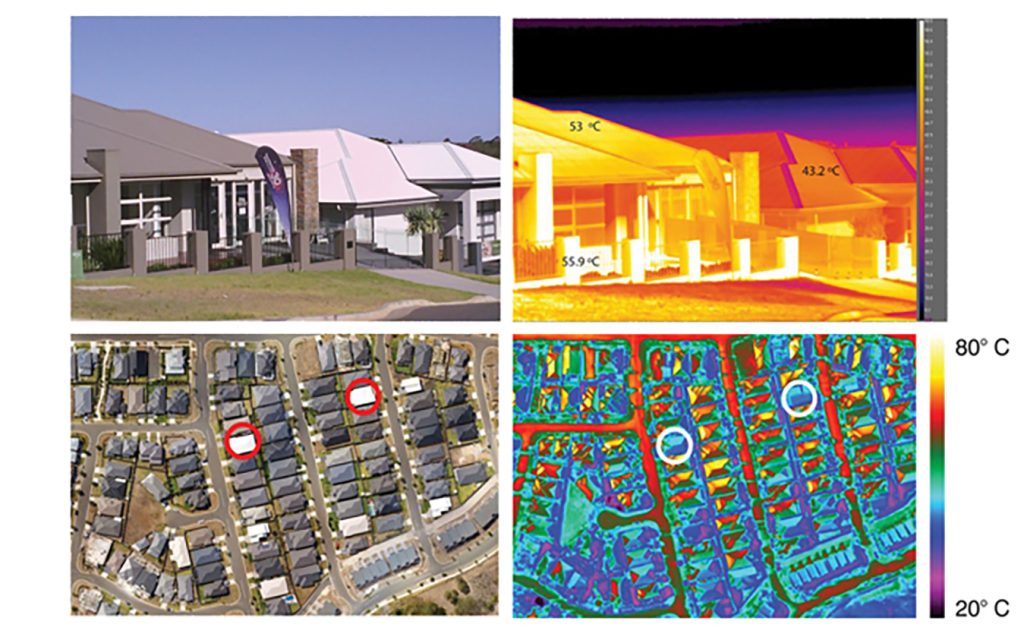
The study on the Cool Roofs Mitigation Potential in Australia, School of Built Environment, UNSW Sydney outlined reflective roofing can both mitigate the outdoor air temperature and reduce the cooling energy consumption of buildings, in all Australian cities. The premise of this study was based on surface colour only. The use of cool roofs is associated with heating penalties – i.e., higher heating energy needs – which are largely outweighed by the cooling energy savings, already in the present climate context.
Blocking Heat Load is More Than Just Reflecting Light

Cool roofs save businesses, industry and governments money in many ways. First and foremost the reduction of heat load from both the sun’s solar heat from infrared (53%), visual (44%) and UV (3%) heat through the roof reduces the need for extra power consumption to stay cool, therefore reducing energy and potentially reducing energy expenses. They provide a safer well being of staff from less heat related issues and stress.
Reducing heat with cool surfaces also protects stock from heat related perishing and in cool and cold storage reduces the risk of contamination and spoilt stock as well as reduced maintenance of air conditioning motors. Reducing surface heat on water pipelines also reduces the risk of Naegleria fowleri a water-borne bacteria caused by warm, fresh water.
Roofing assets are extended with the reduction of thermal shock which reduces the potential of corrosion and protects the substrate. Cool roof coatings also improve the efficiency of PV solar by creating a cooler microclimate round the panels which increases the output of solar power along with less power consumed means more back to the grid. Cool roofs also reduce the consumption of diesel fuel in transportation costs.
Cool Roofs, Green Roofs and Solar Panel Roofs
Researchers at the U.S. Department of Energy’s (DOE) Argonne National Laboratory examined three different types of roofing strategies and their impact on near-surface temperature and cooling energy demand through regional modelling in the Chicago area. With increasingly warming temperatures during the summer months, urban cities like Chicago need to arm decision makers and communities with information about strategies to help keep their residents cool. One strategy involves something all buildings already have: a roof. Certain roofing materials can help cool the surrounding outside air and decrease the need for AC.
Reduced the near-surface temperature:
- Cool roofs 1.5°C
- Green roofs 1.2°C
- Solar panel roofs 0.6°C
Reduced air conditioning energy consumption the most:
- Cool roofs 16.6%
- Green roofs 14.0%
- Solar panel roofs 7.6%
They found that the three types of roofs reduced the near-surface temperature and AC consumption demand during daytime hours when air temperature is the highest. Cool roofs reduced the near-surface temperature across the Chicago area. Because all the roofing strategies offer cooling effects, they reduce AC consumption. Energy demand was shown to be reduced by 16.6%, 14.0%, and 7.6%, when cool roofs, green roofs and solar panel roofs are deployed, respectively (source).
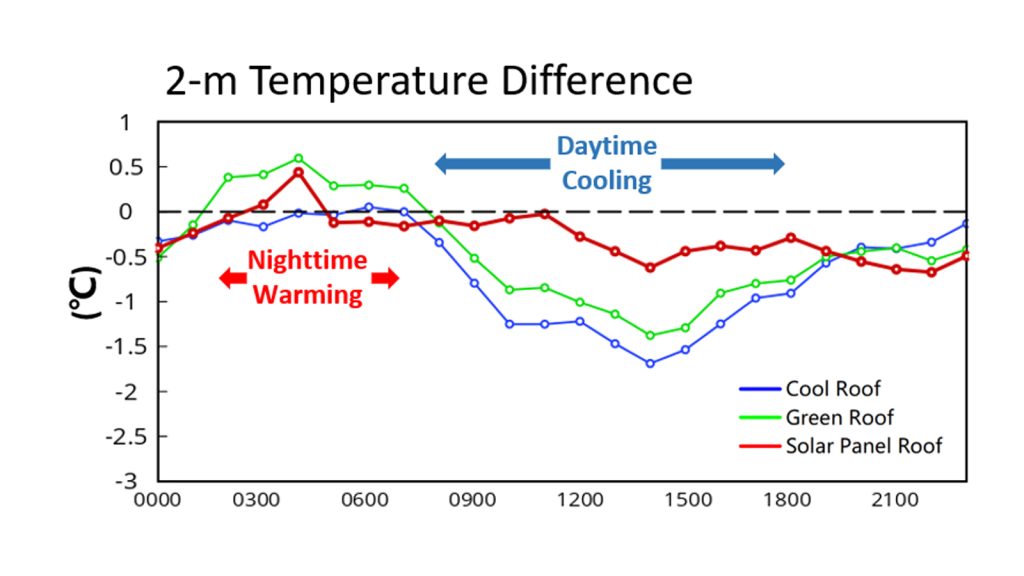
Roofs are Vital to Control Heat to Keep You Cooler
Implementing cool roofs during the cooler months ensures when you transition to summer businesses are prepared for the change. Naturally as summer heat bites the demand for application increases and there can be extensive waiting for both applicators or the correct coatings. While you can apply glossy white reflective heat paints, they primarily reflect the visual component of heat. While many products promote the relative value of SRI (Solar Reflectance Index), understanding how much heat as an absolute value of heat transfer into the building is most important. For the most effective results from a cool surface coating look for products that are tested to also block infrared heat, are light in colour, last over 20+ years. You can also look for additional benefits of fire protection, sound reduction, resists mould and mildew and are safe water based with low VOCs.
Cool Roofs Australia
Australian Cool Roof Articles
- Is the sea of dark roofs raising the heat in Australia’s new suburbs?
- ‘Blistering temperatures’: Dark roofing banned on Sydney’s urban fringe | pdf
- Driving Increased Utilisation of Cool Roofs on Large Footprint Buildings
- Victorian Energy Saver Insulation and Cool Roofs – PDF
- Home energy efficiency could be improved significantly through simple tweaks like roof colour
- Adelaide’s urban heat islands are compounding the effect of heatwave conditions
- What makes a cool roof “cool”?
- The Truth about Dark Roofs and Cool Roofs
- Cool Roofs Versus Dark Roofs Special Report
- It’s not all black and white: why roof colour matters
- Do white roofs save money?
- Study into thermal performance of roof colour
- Use of Cool Roofs and Vegetation to Mitigate Urban Heat and Improve Human Thermal Stress in Melbourne, Australia
- Are cool roofs the future for Australian cities?
NEOtech Coatings Articles
- Australia’s Cool Roof Building Energy Efficiency Opportunity
- Is SRI really an Effective Cool Roof Standard? – LinkedIn
- Cool Surface Technology
- Cool Roof Guide
- Why is your home hot at night?
- Urban Heat Island Effect
- 7 reasons to apply a cool surface and roof coating system on your building
NEOtech Coatings the Cool Roof Solutions Provider
How Super Therm® can reduce CO2 emissions in your business and reduce money spent on energy.









